About two years after the AMD-Xilinx acquisition, we have a product many may have assumed was already in the market. AMD is now selling its Ryzen Embedded and Versal parts together as part of AMD Embedded+. This is not the single-package solution some have been waiting for. Instead, they are on the same PCB.
AMD Embedded+ Announced
The AMD Embedded+ combines Ryzen for the CPU and Versal for the FPGA onto a single PCB.
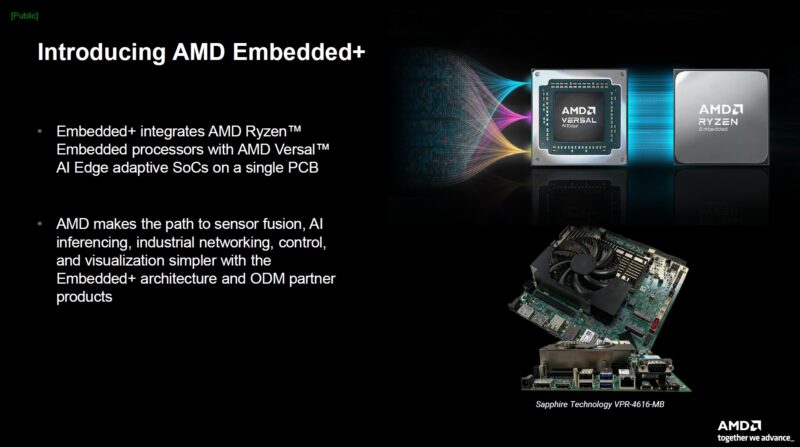
One of the big features of the new offering is that it is designed for sensor processing using the x86 and FPGA parts for what they are best at.
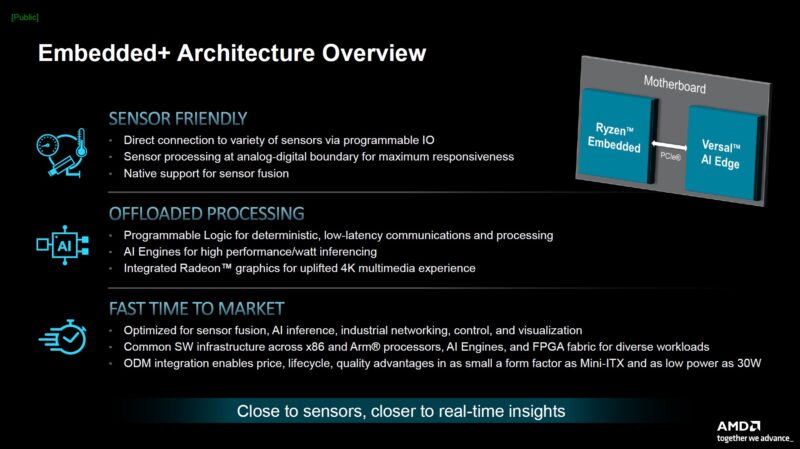
Something that may be obvious, looking at the slides above and below, is that these are two packages connected via PCIe.
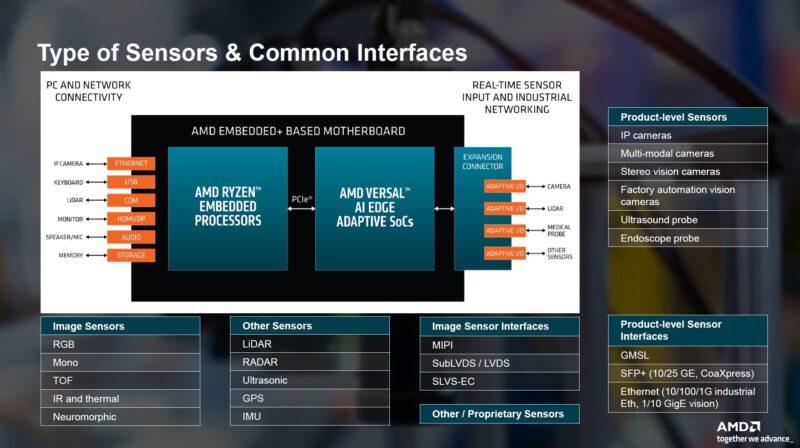
One of the platform’s advantages is the flexibility in handling different types of I/O.
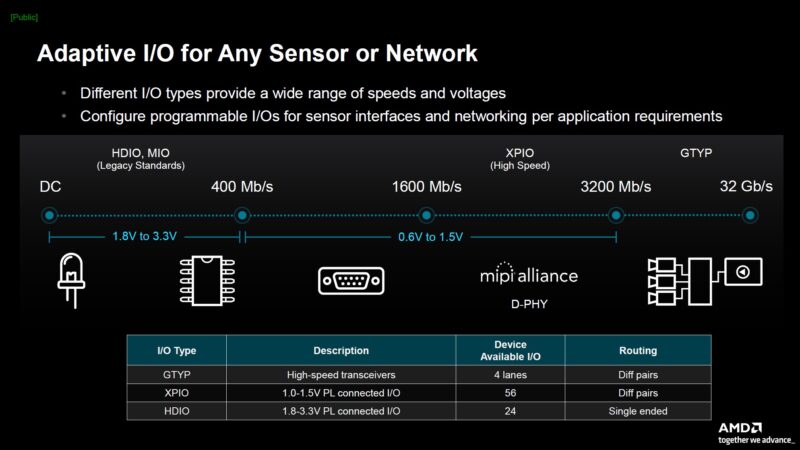
If you want, you can get a Zen+ based AMD Ryzen Embedded R2314 SoC. Typically, embedded products have longer lifecycles. We can see this has ten years of planned availability. The chip itself was launched in 2022, so it is likely around two years into its ten year cycle. At the same time, Zen+ is around six years old already.
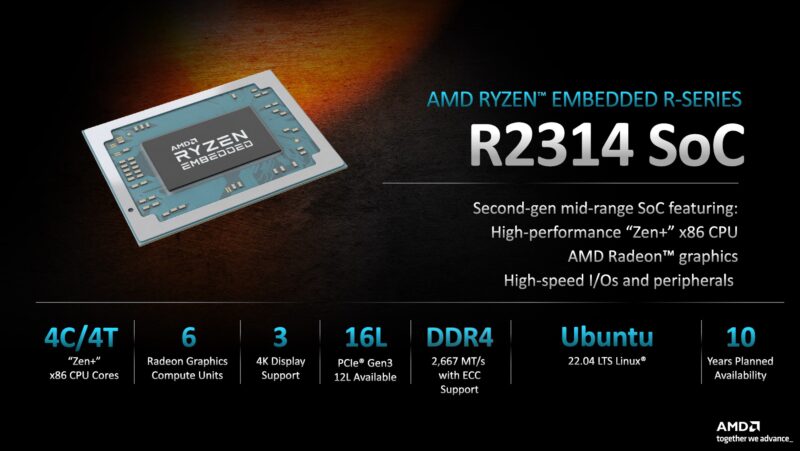
Of course, with the Ryzen embedded, we get a GPU with display outputs as well as the encode/ decode functions. We do not get AV1 since this is an older set of encode/ decode IP.
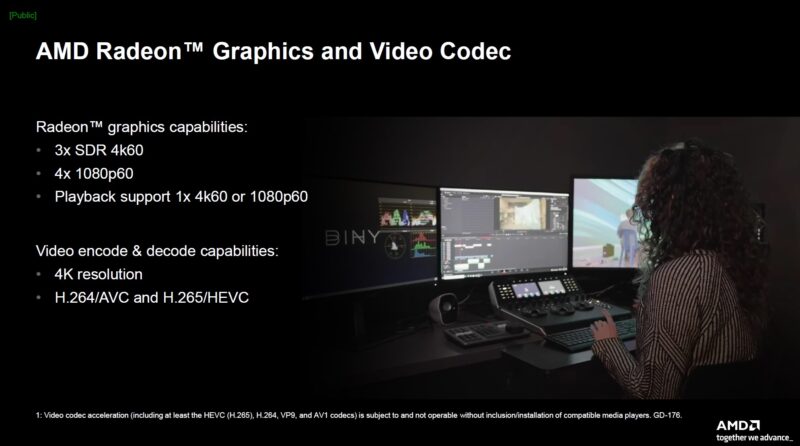
The Versal AI edge architecture has a lot of the I/O, DSP functions, and so forth for the platform.
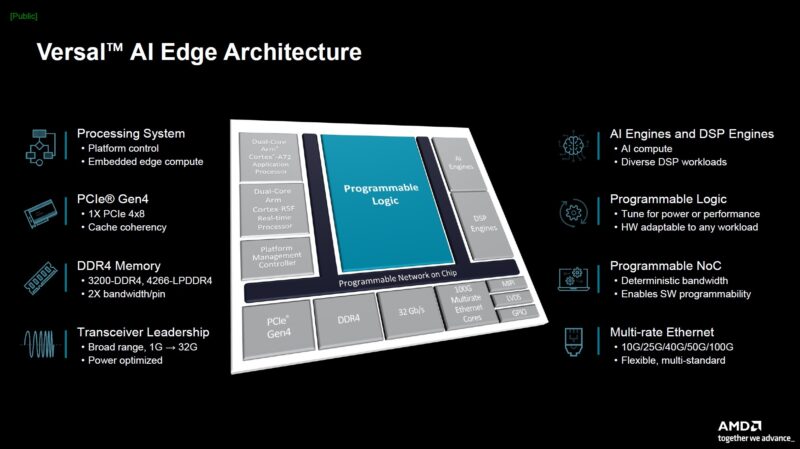
The bigger aspect is that AMD is going to market with partners today with the new platform. For example, the Sapphire VPR-4616-MB has the AMD Versal AI Edge 2302 along with the AMD Ryzen Embedded R2314. It has functions for a PC, but also has an expansion connector for I/O boards.
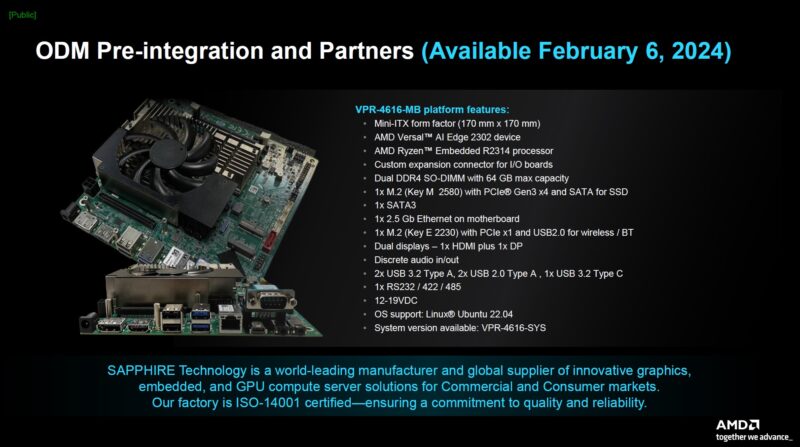
That is a big part of the AMD Embedded+ story. The idea is to reduce time to market for folks building solutions by making it easier to pair AMD’s embedded x86 and FPGA portfolios.
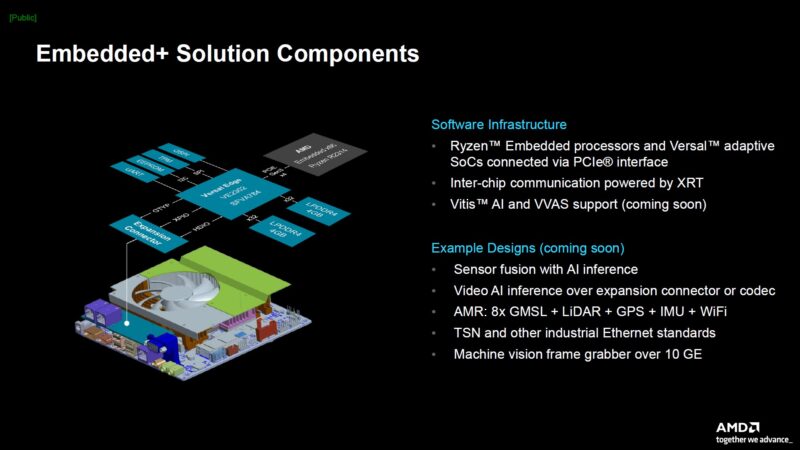
AMD plans to offer a pre-built infrastructure version for this solution, but there will also be a fully customizable version.
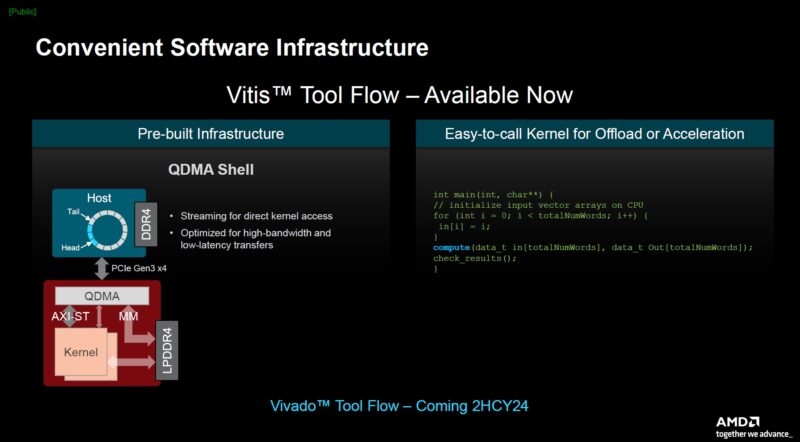
The idea with Embedded+ is not just the AMD Ryzen Embedded R2314 and Versal AI Edge 2302. AMD sees this as spanning multiple generations of embedded CPUs and different FPGA variants.
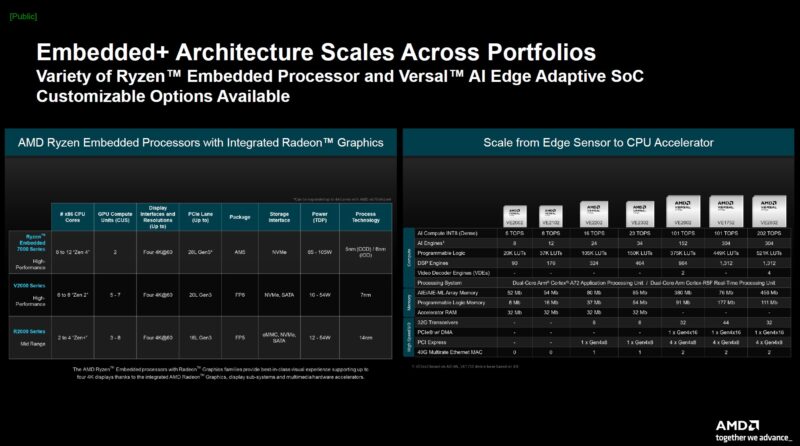
AMD also has Zen 2 and Zen 4 embedded CPUs that it can pair with much larger FPGAs.
Final Words
The idea behind AMD Embedded+ makes so much sense we thought it already existed. Behind FPGAs is often an x86 CPU somewhere, even if it is upstream. Selling a combined x86 CPU plus FPGA solution with some level of pre-validation and software support makes sense. Hopefully, we get to see more AMD Embedded+ products in the market soon.

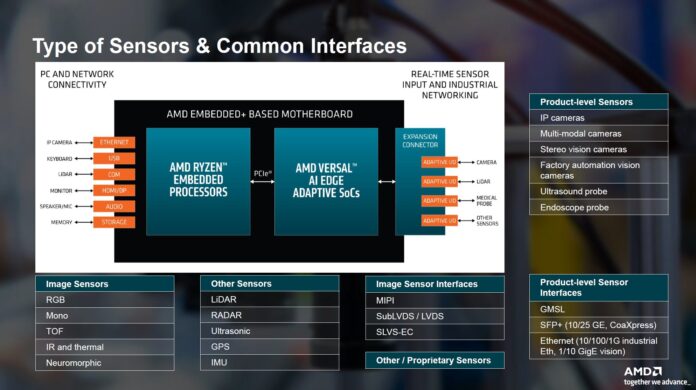



Why in the world use the 2000 series when there is a much more recent Ryzen Embedded 3000?
Where’s the epyc 3000 upgrade. Always so slow both Intel and AMD with this area.
My system will be a genuine 10 years old by the time a suitable replacement ships.
My motherboard costs more to buy now then it did when I got it
That is pretty neat. I thought it must already exist too.